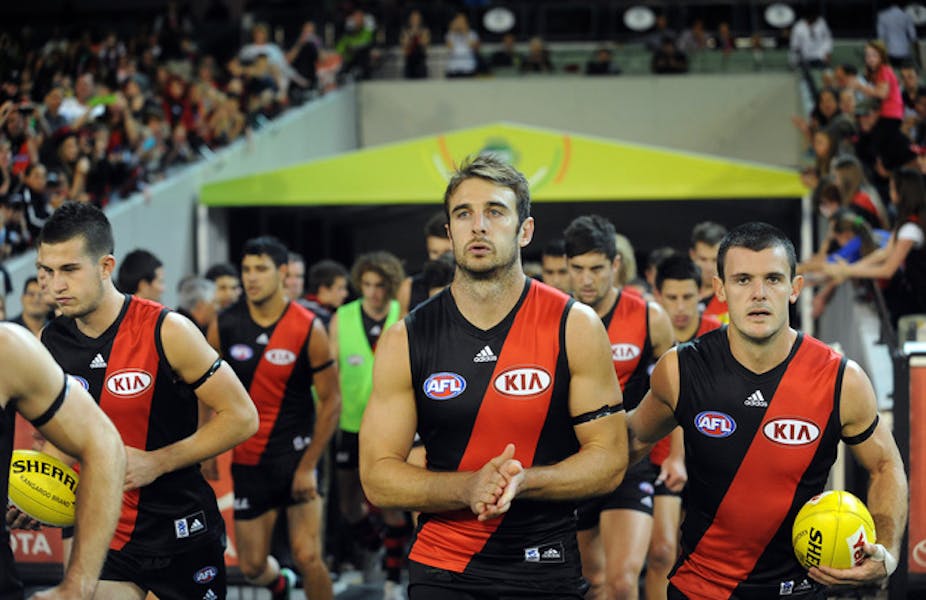It’s been more than four months since Australia’s “blackest day” in elite sport, with allegations of widespread misuse of drugs and other substances.
After several years of high-profile cases of drugs-in-sport in cycling, AFL, NRL, swimming, athletics and cricket, the Australian government and major sports governing bodies finally vowed to harden their stance on drugs in sport.
Since then, we’ve seen calls for harsher punishments for athletes who test positive for drugs, more funding and power to anti-doping groups, and new links between the Australian Sports Anti-Doping Authority (ASADA) and the Australian Crime Commission.
The Senate also voted on Monday to boost the coercive powers of ASADA, which would compel people to attend interviews and hand over documentation requested, including phone records, documents and players’ medical prescriptions. The bill is expected to clear the House of Representatives by tomorrow.
But simply giving anti-doping agencies more power won’t fix the problem; coercion and punishment will not achieve the anti-doping culture and athlete behaviour that governments and sporting bodies are hoping for.
Instead, we need to better understand the factors and conditions that produce athletes who choose to engage in doping – and implement an evidence-based regime of education and prevention to address this culture.
Lip service to ethics and integrity
One interesting feature of the response to the drugs-in-sport issue has been the heavy emphasis on ethics and integrity by government, anti-doping agencies, and sporting codes. A remarkable amount of activity has occurred in this space recently:
- the AFL, NRL and peak bodies for cricket, cycling and athletics have either undertaken integrity reviews, established integrity units or strengthened powers of existing units
- the Australian government and Victoria police have established sport integrity units, and
- the Australian Olympic Committee has introduced an ethical behaviour bylaw amendment requiring athletes to sign a statutory declaration swearing no involvement in sports doping.
At first glance, there seems to be little wrong with an approach to anti-doping that champions the ideas of ethics and integrity. But on closer inspection, two key problems deserve our attention.

First is the lack of public dialogue about how ethics and integrity should be defined in relation to drugs in sport. Unfortunately, few sports governance bodies have revealed what definition of ethics and integrity is guiding their efforts. It is also telling that the National Integrity of Sport Unit offers no definition of such concepts on their website – probably due to an assumption of widespread agreement on the ethics and integrity stance it prescribes.
The Australian Sports Commission is a little more helpful in defining integrity as:
the integration of outward actions and inner values. A person with integrity does what they say they will do in accordance with their values, beliefs and principles.
Integrity, for this peak Australian sports body, is about consistency of actions.
But what do we do when our ethics and values are inconsistent or differ? This is an especially important question considering these recent examples:
- The reinstatement of confessed doper Matt White as sports director by Orica Greenedge, while the Australian Olympic Committee and Cycling Australia have refused to reappoint him
- Varied sanctions on athletes from different codes for misuse of alcohol, against the backdrop of large-scale alcohol advertising and sponsorship in sport
- Recent cases of suspect supplement use within some codes, with few apparent consequences to date for coaches and other leaders.
How are we to reconcile these inconsistencies with the recent rhetoric and actions of the Australian government and major sporting codes in the name of ethics and integrity?

Enforcing ethical behaviour
This leads us to the second problem threatening ethics and integrity activities in the Australian sports anti-doping setting – the narrow and negative framing of such activities as punitive policy tools designed to enforce ethical behaviour.
The ethics and integrity units recently established by sporting codes, organisations and governments are largely designed with detection and enforcement ends in mind rather than education, enablement and prevention. These units focus on surveillance, investigation, intelligence gathering and analysis, auditing and compliance, links with enforcement, and sanctions or punishments. These are deficit-reduction not capacity-building approaches.
The domain of ethics and integrity behaviour in sport is more complicated than this narrow framing by the government and major sporting codes would suggest. On the one hand, research shows that there is agreement in the general population and among athletes about the need for sports anti-doping measures.
But importantly, the evidence also reveals that divergent views exist amongst the general public, athletes and sports officials (and at different levels of sport) about the relative incidence and impact of drugs and doping in sport alongside other ethical and integrity issues (such as violence, racism, corruption, gender attitudes), and the acceptability of specific anti-doping responses.
Looking back to go forward
A 2011 Australian Sports Commission-funded review of integrity in sport literature made similar points. The reviewers made two important recommendations in the ethics and integrity area which make very clear the information needs in this area:
There is a need for significant further research on the behaviour, values and attitudes relating to integrity and ethics among younger sports players.
There is a pressing need to empirically evaluate the context, social meanings and effectiveness of policies, processes and structures that are designed to foster ethical sporting behaviours.
Unfortunately, judging from recent ethics and integrity initiative’s in Australian sport, this important review appears to have gained little traction in the sports governance and policy sphere.
For real progress, we need need to start with a greater understanding of the social, cultural and environmental conditions that produce athletes who choose to play outside the rules. Australian sport deserves nothing less.

